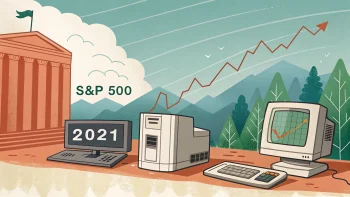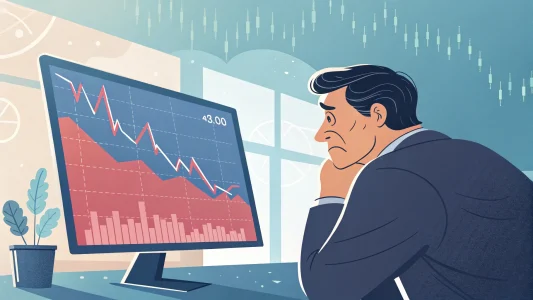Payroll stats, which consist of the number of jobs added to (or removed from) the economy, are released monthly. Economists, workers, investors, and businesses watch these stats closely because they provide a glimpse into the economy’s strength.
Significant increases in payrolls mean a strong economy and falling unemployment. Shrinking payrolls mean a weak economy where people are losing their jobs. These numbers have held particular significance in recent months as economists and investors hope we can avoid a recession during this time of high interest rates.
Job growth was higher than expected in March, which could be a good sign for the economy. However, it may have complicated impacts on the market.
Key Takeaways
- Total nonfarm payroll employment grew by 236,000 in March 2023.
- Wage growth also remained strong, reaching 5.1% year-over-year.
- This news can actually be seen as troubling to investors as the Federal Reserve may be more incentivized to take action if they believe discretionary spending won’t decrease.
Table of Contents
ToggleBackground
The economy has been on a rollercoaster ride since the beginning of the COVID-19 pandemic in 2020. Payroll numbers dove from more than 152 million at its peak in February 2020 to a low of approximately 130.5 million in April of that year as the pandemic hit.
Since then, payroll growth has been relatively steady. Today nonfarm payrolls sit around 160.7 million, slightly above the pre-pandemic high.
Between the start of the pandemic and now, the economy has faced supply chain shortages and high inflation. Many workers have left their jobs as part of the Great Resignation or looked for jobs that offer higher pay.
The combination of persistently high inflation and increased interest rates has meant that some fear a recession is still on the horizon, further complicating predictions about the future of the economy and employment levels.
The Federal Reserve’s Mission
The Federal Reserve is the government body responsible for managing economic growth and maximizing employment. The operative phrase when discussing the Fed is “sustainable growth.” When supply and demand imbalances lead to higher prices spread across the economy, the Fed has to take action to keep price growth from becoming unsustainable (unaffordable to most Americans).
The Fed walks a tightrope trying to encourage economic growth – 2% is the target inflation rate the Fed hopes to achieve – while preventing a price swing or drop so drastic that it crashes the economy.
The Fed does this through interest rates, a form of monetary policy in which the Fed influences the rate at which banks borrow from each other’s reserves overnight to meet cash reserve requirements. When the Fed raises the fed funds rate, it causes banks to lend each other money at a higher rate, encouraging them to save more and make short-term borrowing more expensive.
Conversely, when the Fed lowers the fed funds rate, banks can borrow from each other for less, so they lower interest rates on savings products and make short-term borrowing more accessible to consumers.
The changes in the fed funds rate trickle through the economy, leading consumers to spend less money on discretionary purchases when rates are high, lowering variable credit cards rate when rates decrease, etc.
Does the Fed Want High Unemployment?
The Fed is tasked with both managing inflation and maximizing employment. Therefore, it’s not accurate to say the Fed “wants” people to be unemployed. However, if you’ve heard this sentiment on the news or from a family member, the kernel of truth is that when inflation is high, an increase in unemployment can be interpreted by the Fed as a step in the right direction.
Because the Fed wants to slow the economy down when inflation is high, increased unemployment is often a sign that businesses are registering higher borrowing costs and trying to save money. Letting employees go is a common way of doing this.
With that in mind, it’s not entirely true to say the Fed wants unemployment to increase, but it’s also not entirely false. The fact employment rose in March may concern investors because it signals to the Fed that businesses are still expanding, hiring more people, who in turn will have more money to put into the economy.
What Happened
The Bureau of Labor Statistics (BLS) annually announces payroll numbers. In its most recent report, the BLS announced that nonfarm payrolls, one of the most critical measures people track, increased by 236,000 in March 2023.
It also noted that the unemployment rate remained almost unchanged at 3.5%. This is close to the lowest unemployment rate the country has seen in the past 20 years.
These numbers were close to what many economists and analysts expected. The 236,000 jobs added to the economy beat some expectations but also signaled a slowing in the hiring rate generally. The BLS also announced an increase in hourly earnings of 4.2% year-over-year.
The report also revised February’s payroll numbers up by 15,000 to +326,000.
Much of the growth in March came in leisure and hospitality, one of the areas hit hardest by COVID and which faced difficulties finding employees to return to work. Healthcare also saw strong gains. It’s important to note that with both of these areas, however, the monthly increase was still lower than the average increase per month of the previous six months.
Retail saw payrolls shrink.
What Do Rising Payrolls Mean for Employees and Businesses?
In general, rising payrolls is a good thing for employees. The more jobs the economy adds, the more demand there is for workers. This means that people who are out of work have more opportunities to apply for and get a job.
For people who are already employed, it means more options if they want to move to a new role.
More jobs in the overall economy mean more competition to hire workers. That forces employers to offer more to people they want to hire. This puts upward pressure on wages and can lead to companies offering additional benefits, such as more paid time off.
Recent payroll reports have seen solid job numbers and moderate wage growth (though still below inflation), clearly showing this relationship.
On the other side of the equation, rising payroll numbers can make things more difficult for businesses. With more competition for workers, employers must pay higher wages to remain fully staffed. This increases costs and can lead to lower profits or price hikes for its products.
However, if the economy weakens, many employers will find themselves losing customers as people reduce their spending. Employers want to see steady growth, not growth that makes competition for labor too stiff.
What Do Rising Payrolls Mean for Investors?
One would expect that rising employment indicates a strong economy, which should be a good thing for investors. However, that is often not the case.
The reason the market often opens lower after a strong employment report is released is the employer side of the equation and expectations for the economy going forward.
Investors purchase shares in businesses. Rising payrolls and wages mean companies must spend more money on paying their employees, reducing profitability. This can push stock prices lower.
Continued action from the Federal Reserve, which may think the economy is overheating, is also a concern. Inflation is still high – predicted to be around 5% again in April – and the Fed has not yet decreased interest rates.
Jerome Powell, the chairman of the Federal Reserve, was pessimistic late last year about the chances of engineering a “soft landing,” a situation in which the economy avoids a recession despite high interest rates pushing down demand. Analysts have become more optimistic in 2023 but still anticipate a recession will be called later this year.
The Federal Reserve sees fighting inflation as necessary, with Powell saying last year: “we have got to get inflation behind us. I wish there were a painless way to do that. There isn’t.”
The economy adding more jobs than expected indicates to the Fed their actions thus far have not slowed things down enough to cause the necessary drop in inflation, which sat at 5.0% year-over-year in March. This is far higher than the Fed’s typical target of 2%.
If the Fed continues to boost interest rates, it will make fixed-income securities more appealing and stock less attractive. It also increases the odds of a recession rather than a soft landing, which could cause significant declines in the stock market.
The Bottom Line
Payroll numbers are an essential metric that economists and stock market experts track. In most scenarios, growth is a good thing for the economy. The Federal Reserve aims for an inflation rate of 2%, indicating demand for goods and services is naturally increasing their price over time. It’s when inflation exceeds that rate that things start to appear unsustainable.
We’re living in an inflationary time, with the Fed attempting to curb inflation with high interest rates. Seeing unemployment rise and employment numbers decrease would signal to the Fed that their monetary policy is having its desired effect, pulling more money out of the economy.
Instead, the most recent employment report has signaled to investors that the Federal Reserve will likely take more action to cool inflation in light of higher-than-desired employment numbers. Still, the employment rate is slowing down, which is a good sign.
















